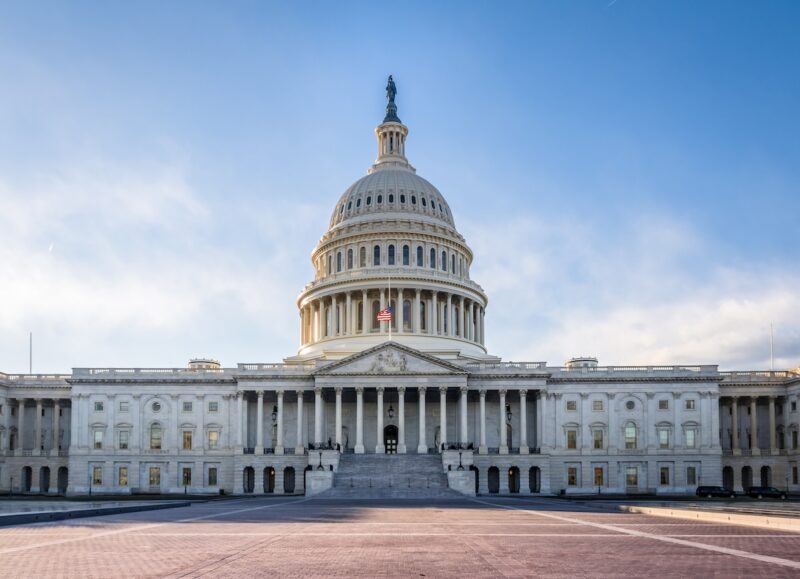
Reconciliation package narrowly passes budget committee
A massive $4 trillion reconciliation package narrowly passed the U.S. House Budget Committee on May 18, sending it to the Rules Committee for negotiated changes to be added and clearing the way for a floor vote in the next several days.
Four House Freedom Caucus members had initially held up the package, which hinges on securing votes for a controversial overhaul to the Supplemental Nutrition Assistance Program and other contested cuts, before voting “present” to allow the bill to be reported out on a 17-16, party-line vote.
The proposal would add $60 billion in farm bill programs to the agriculture portion of the mega bill, with the additional funding coming from $290 billion in cuts to SNAP spending over the next 10 years.
The rules committee took up debate in the early morning hours of May 21.
Cuts breakdown
The SNAP cuts, along with Medicaid cuts debated by the House Energy and Commerce Committee, have drawn opposition. The cuts would shift some federal SNAP spending to states for the first time in the history of the program, which helps to feed more than 40 million low-income Americans.
Planned changes also include a plan to limit future benefits increases and new work requirements.
On May 14, the House Agriculture Committee reported the package out of committee.
According to analysis from Politico, the ag committee cuts include:
- Forcing states to pay for part of SNAP benefits based on their payment error rates saves $128 billion.
- Changing work requirements, waivers and other criteria for SNAP recipients who are able-bodied adults without dependents saves $92 billion.
Limiting future updates to the Thrifty Food Plan, the basis for calculating SNAP, saves $37 billion. - Forcing states to pay for more of SNAP administrative costs saves $27 billion.
Restrictions on participants including internet costs in computing shelter expenses saves $11 billion. - Requiring state agencies to use indications of SNAP overpayments to prevent overpayments of other federal and state benefits saves $7 billion.
- Closing an internet utility loophole for SNAP participants who are not elderly or disabled saves $6 billion.
- Scrapping the National Education and Obesity Prevention Program for SNAP participants saves $5 billion.
- Reducing the tolerance level for SNAP error payments from $37 to $0 saves $80 million.
- Changing the general SNAP work requirement age from over 15 and under 60 to over 17 and under 65 does not affect direct spending.
Industry reaction
“As very positive news, the spending package that cleared committee includes not only program crop spending but also enhancements to key Specialty Crop Farm Bill Alliance priorities,” National Potato Council CEO Kam Quarles said in a May 16 statement.
Those funding enhancements include:
- Specialty Crop Research Initiative: $175 million per year (an increase from $80 million)
- Specialty Crop Block Grant Program: $100 million per year (and increase from $85 million)
- Adjusted Gross Income: The limitation is eliminated if 75% or more income is derived from farming
- Market Access Program: $200 million (a 100% increase)
- Section 7721 – Pest and Disease programs under Plant Protection Act: $90 million per year (an increase from $75 million)
“The current lack of a modern farm bill remains concerning, particularly for the fruit and vegetable sector within specialty crops. Our industry has undergone more significant transformations since the 2018 farm bill than any other part of agriculture,” Quarles said. “The landscape for specialty crop growers is drastically different today compared to when the last farm bill was enacted, and we continue to urge Congress to provide growers the modern tools they need through a comprehensive, bipartisan farm bill.”
Quarles is co-chair of the Specialty Crop Farm Bill Alliance, a national coalition of more than 150 organizations representing growers of fruits, vegetables, dried fruit, tree nuts, nursery plants and other products. The SCFBA also applauded specialty crop investments in the reconciliation package in a May 13 statement.
“Although our strong preference is to enact agriculture policy in the context of a comprehensive bipartisan farm bill, we appreciate the chairman’s (ag committee chair Glenn “GT” Thompson) long-standing support of our industry and for seizing this opportunity to support America’s specialty crop growers,” the statement said.
The National Young Farmers Coalition condemned the proposed cuts in a May 15 statement.
“This budget proposal is a betrayal of the values that sustain our food system. These are not the investments young farmers need,” said Erin Foster West, policy campaigns director of the National Young Farmers Coalition. “Instead of passing a bipartisan farm bill that builds resilience for farmers and families alike, this bill fast-tracks harmful cuts to nutrition programs that serve as both a safety net for families and a revenue stream for farmers. It trades long-term food security for short-term austerity.”
 The International Fresh Produce Association has encouraged a focus on increasing access to and consumption of fresh fruits and vegetables in SNAP discussions. Mollie Van Lieu, IFPA vice president of nutrition and health policy, recently told The Packer that SNAP serves 42 million people a year with an average monthly benefit of about $211 per person, which breaks down to $60 a day or $6 per meal.
The International Fresh Produce Association has encouraged a focus on increasing access to and consumption of fresh fruits and vegetables in SNAP discussions. Mollie Van Lieu, IFPA vice president of nutrition and health policy, recently told The Packer that SNAP serves 42 million people a year with an average monthly benefit of about $211 per person, which breaks down to $60 a day or $6 per meal.
Van Lieu has also called for data showing that people would spend more money on fruits and vegetables before supporting proposed SNAP restrictions to soda and candy.
In March, the organization submitted policy recommendations (.pdf) to the Make America Healthy Again Commission reinforcing its commitment to improving public health nationwide and reducing diet-related diseases.









 Video Library
Video Library 


















